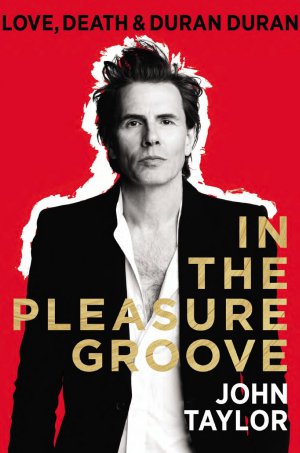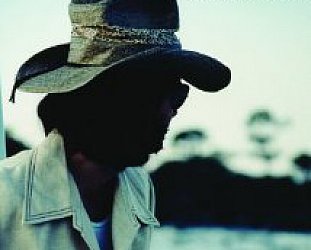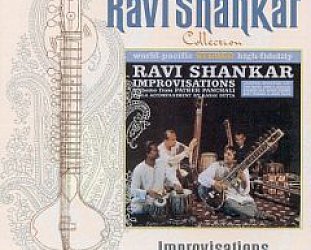Graham Reid | | 4 min read
Duran Duran: Ordinary World

Pop quiz: Which famous face appeared the greatest number of times as cover star of UK teen pop bible ‘Smash Hits’ during the magazine’s most successful decade – the 1980’s?
Was it Madonna? George Michael? Michael Jackson? I'm afraid not.
Hmm…Phil Collins then?
No again – it was John Taylor.
You remember, Duran Duran’s lead…err…bass guitarist.
For while the former four acts sold more records, in the 1980’s Duran Duran was the number one act with “the kids”: The group, or more often some configuration of its photogenic line-up, starred on a remarkable 15 Smash Hits covers, with JT, the groups most popular member featuring on 10. Distant second place getters Wham!/George Michael featured on 8 covers, half of DD’s count, while Madonna had to settle for bronze with 6 covers.
Wisely focussing on this 1980’s golden era, Taylor's memoir In the Pleasure Groove: love, death and Duran Duran’ (Sphere, 2012) is an entertaining, honest and realistic retelling of the DD saga.
The tale begins with the obligatory childhood recollections, but soon gets down to the interesting stuff: He meets future DD co-founder and keyboardist Nick Rhodes on page 46 and on page 75 he begins recording the band’s genesis. After a few false starts, the group settles on its final line-up with the arrival of guitarist Andy Taylor and front man Simon Le Bon. They progress at a cracking pace: within the first 18 months the band sign a worldwide record deal with EMI and enjoy four top 40 singles and a top three album.
 Taylor reveals that one of the key
decisions the band makes in its early days is that it is a
democracy. Every song they author is equally credited to all
five band members – yes, even drummer Roger. Admirable
perhaps, although the cynic can't help but ponder if any group
member was free loading. And of course it does nothing to quell
the commonly held suspicion that Nick Rhodes was responsible for
the lion's share of the song writing.
Taylor reveals that one of the key
decisions the band makes in its early days is that it is a
democracy. Every song they author is equally credited to all
five band members – yes, even drummer Roger. Admirable
perhaps, although the cynic can't help but ponder if any group
member was free loading. And of course it does nothing to quell
the commonly held suspicion that Nick Rhodes was responsible for
the lion's share of the song writing.
He does confess that Le Bon was solely responsible for lyrics, but this is not surprising – who wants to take credit for ‘Shake up the picture, the lizard mixture with your dance on the even tide’ (Opening lyrics to 1984 single ‘New Moon on Monday’).
The frenetic pace of the groups first 18 months does not abate and the DD juggernaut charges on for another four years of success. For Taylor, who takes pride in the bands democracy, but finds himself singled out for the most attention by the group’s female fans and burgeoning UK teen pop press, the pressures start to mount and he turns to class A drugs and an endless succession of one night stands.
The group becomes a victim of its own success: At its 1985 peak, megalomania running riot, the conflict-ridden band splits in two.
John and Andy team up in The Power Station, while Nick, Simon and Roger become Arcadia. They reunite for a tension-filled and woeful performance at Live Aid, but Andy and Roger depart shortly after, leaving the remaining trio to face rapidly depleting audience numbers to the decades end and beyond.
During his retelling of the hit-less post Live Aid years, you can’t help but feel sorry for John. By his own admission, he had little success in life before DD. An only child and long-time bachelor, he views the group as his everything: his career, his family, his one true love. He obsesses over what he should do to get them back on top: he must remain single to foster hope in the group’s amorous fans, he must get Roger and Andy back, if only they could hire Nile Rodgers as producer again… etc ad lib to fade.
He also admits to having little to do with the group's only post-1980s hits Ordinary World and Come Undone. Poor John!
Thankfully, the book ends on a high note: Marriage and family arrive in 2000 and DD enjoy greater success in the noughties than the nineties, thanks to a four-year reunion of the original five-piece.
This bio has many good points: The quantity and quality of photos is giddying.
Many are from the author’s personal collection and can’t have been seen by many. The book is well-paced, with the bulk of its pages dealing with DD’s formation and time at the top (1978-1985).
The last 100 pages deal with everything that has happened, or hasn’t, since then.
Taylor is also usually realistic about DD’s body of work. He claims Rio is their best album and The Power Station was a vanity project that quickly ran out of steam -- check and check.
He does make some dubious claims, such as “Live Aid was the greatest concert event of the 20th Century” with “Duran Duran one of the main attractions”.
Also, Michael Jackson was “chasing our tails, hungry to take the video-king crown off us”. This is in late 1984, a year after MJ has released videos for Billie Jean, Beat It and Thriller.
Some of the subjects he writes about are uninspiring: a chapter about his time in rehab (man) and another chapter about an eventless Italian tour in 1987.
But these are quibbles.
My only real beef with this book is best illustrated on pg 385 when Taylor refuses to reveal anything about the troubled reunion of the original five-piece, simply stating, “My friendships with all of my band mates, future and past, are my highest priority”.
Fair enough. But surely he must have some insight on the tensions that caused the band to implode at its commercial peak, and caused Andy Taylor to walk again in 2007. If he does, he is not telling us.
A more revealing tale is Andy Taylor’s Wild Boy: My Life in Duran Duran' (2008). Andy is a crank, and would be a difficult workmate, but he is more upfront about the conflicts within the band – most notably between himself and Nick Rhodes.
While John doesn’t have a bad word to say about any of his band mates, he is honest about his own faults and mistakes and this helps make In The Pleasure Groove a worthwhile read.
John O'Brien is a long-time Elsewhere fan who is not on facebook and doesn't tweet. In July 1984, as an impressionable 11-year old, he was gifted a copy of Duran Duran's Seven and the Ragged Tiger LP. He still owns this album, enjoys giving it an ocassional spin, and is particularly fond of track two, New Moon on Monday. "Shake up the picture, the lizard mixture" indeed!
Other Voices Other Rooms is an opportunity for Elsewhere readers to contribute their ideas, passions, interests and opinions about whatever takes their fancy. Elsewhere welcomes travel stories, think pieces, essays about readers' research or hobbies etc etc. Nail it in 1000 words of fewer and contact graham.reid@elsewhere.co.nz.See here for previous contributors' work. It is wide-ranging.





post a comment